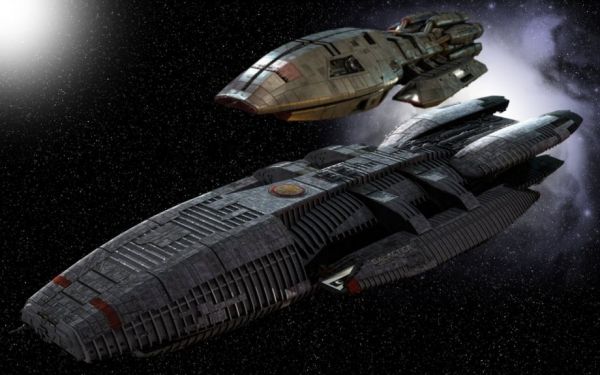
It's all speculative, of course. Humans have never engaged in a space naval battle...that we know about. Star Trek and the like aren't real, but physics is. So Foreign Policy interviewed naval analyst Chris Weuve about the real science behind interplanetary combat in science fiction:
FP: What about ships turning in space like airplanes?And which science fiction franchise is the worst in terms of the physics of flight? Star Wars. Read why at the link.
CW: Babylon 5 was closer in that it understood that there is no air in space and you don't bank. But even on that show, the ships would be under thrust, and then they decide to go back the way they come, they would spin around and almost immediately start going in the opposite direction. That doesn't work. They ignored the fact that acceleration is cumulative. But I do like that they can rotate in flight and fire sideways. Babylon 5 and the new Battlestar Galactica are far and away the best in trying to portray vector physics. There are a lot of problems with the way they do it, but I'm willing to give them an A for effort.
FP: Which are the most realistic sci-fi movies in portraying space warfare?
CW: There isn't any show that does a really good job across the board. Some do better at different parts. For example, the new Battlestar Galactica is probably the best at depicting life on board a ship. That ship is very spacious compared to a U.S. Navy warship, but the inside of it looks correct. One of my all-time favorite TV shows is Star Trek, especially Star Trek: The Next Generation. But one thing that drives me crazy is that on Star Trek, you're either on watch or off duty, when a real naval officer has a whole other job, such as being a department or division head. So he's constantly doing paperwork. Most shows don't get that right at all.

No comments:
Post a Comment